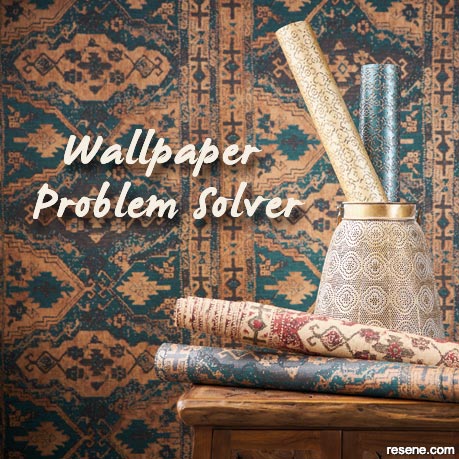From the wallpaper problem solver - quick reference guide
There is nothing present in any wallcovering that will cause mould. Mould is not the fault of the wallcovering.
Whenever heat and moisture are found in combination, conditions are ripe for mould to grow.

How to deal with & prevent mould when wallpapering
Mould spores are organic and being airborne are continually in the air especially in areas with a lot of trees or areas subject to dampness. Mould can show up under wallcoverings in a variety of colours - grey, green, blue, black, pink and yellow.
It is a good practice to wash the walls prior to an installation with an anti-mould solution, especially if a mould problem is suspected.
The spores are attracted to dampness and can be absorbed into the wall lining. The walls may dry out, but the spore can lie dormant for years. Mould spores must have moisture to survive. Bring the dormant spores together with moisture and they will start to grow. In modern homes, lack of ventilation can contribute to mould growth.
Showing up as black spots, normally towards the ceiling. If the mould is on fabric, furniture, or walls, the spots can be removed and leave no sign of discolouration, meaning that this mould is caused solely by the lack of ventilation.
The surface of the wallcovering will start to discolour with spots of various colours, i.e. grey, green, blue, black, pink etc. Any one of these colours, or a combination of all colours, means moisture is behind the wallcovering and has revived the mould spores that were dormant on the wall surface.
When walls are stained because of mould, remove the wallcovering and wash the entire surface with anti-mould solution. When dry, coat the entire surface with a pigmented sealer. This will seal in all spores and stop colour bleeding through the decorative surface of the new wallcovering.
When the sealer is dry, sand the entire surface with 80 grit sandpaper.
Dust the entire surface to remove all dust particles.
Note: It takes a long time to eliminate a mould problem once it has formed underneath a wallcovering. For this reason, an installer must take certain precautions to avoid the problem prior to installing wallcovering in the first place. Here are a few recommendations to follow:
Wash all suspect walls with an anti-mould solution prior to hanging wallcoverings. This will kill all existing mould spores.
Stop any dampness and you can stop the mould. Good ventilation can stop a lot of mould problems.
Mould must have moisture to survive. Mould can also be introduced by an installer who has contaminated equipment, such as paste brushes, pasting machine, buckets etc. Installers should wash and clean their equipment before starting.
Wallpaper problem solver
Thank you to Aspiring Walls for providing the information for this quick reference guide.
Wallpaper problem solver topics Ask an Expert How to wallpaper
Order online now:
Testpots |
Paints |
Primers and Sealers |
Stains |
Clears |
Accessories
![]() Get inspired ! Subscribe
Get inspired ! Subscribe ![]() Get saving ! Apply for a DIY card
Get saving ! Apply for a DIY card
Can't find what you're looking for? Ask us!
Company profile | Terms | Privacy policy | Quality and environmental policy | Health and safety policy
Colours shown on this website are a representation only. Please refer to the actual paint or product sample. Resene colour charts, testpots and samples are available for ordering online. See measurements/conversions for more details on how electronic colour values are achieved.
What's new | Specifiers | Painters | DIYers | Artists | Kids | Sitemap | Home | TOP ⇧
